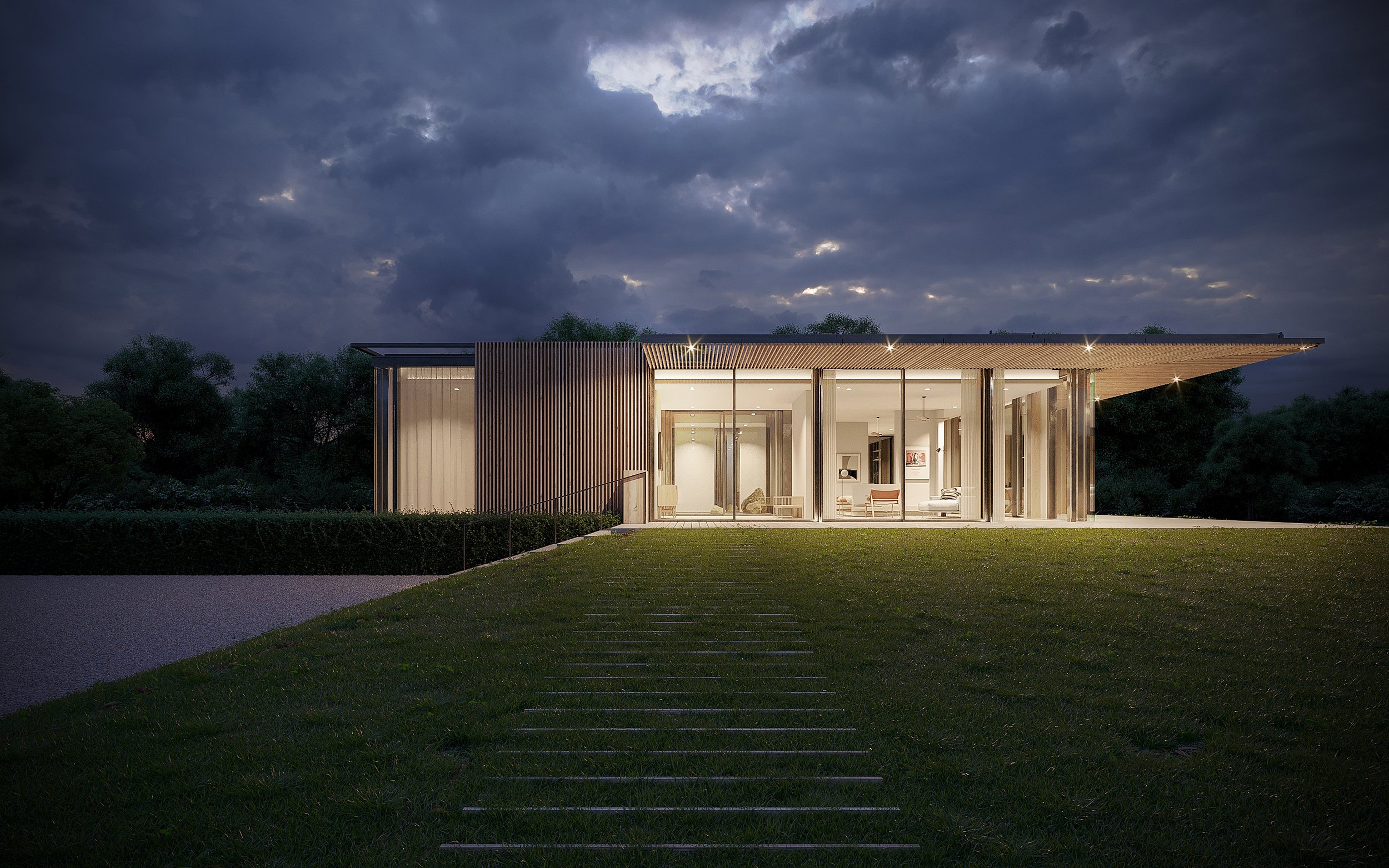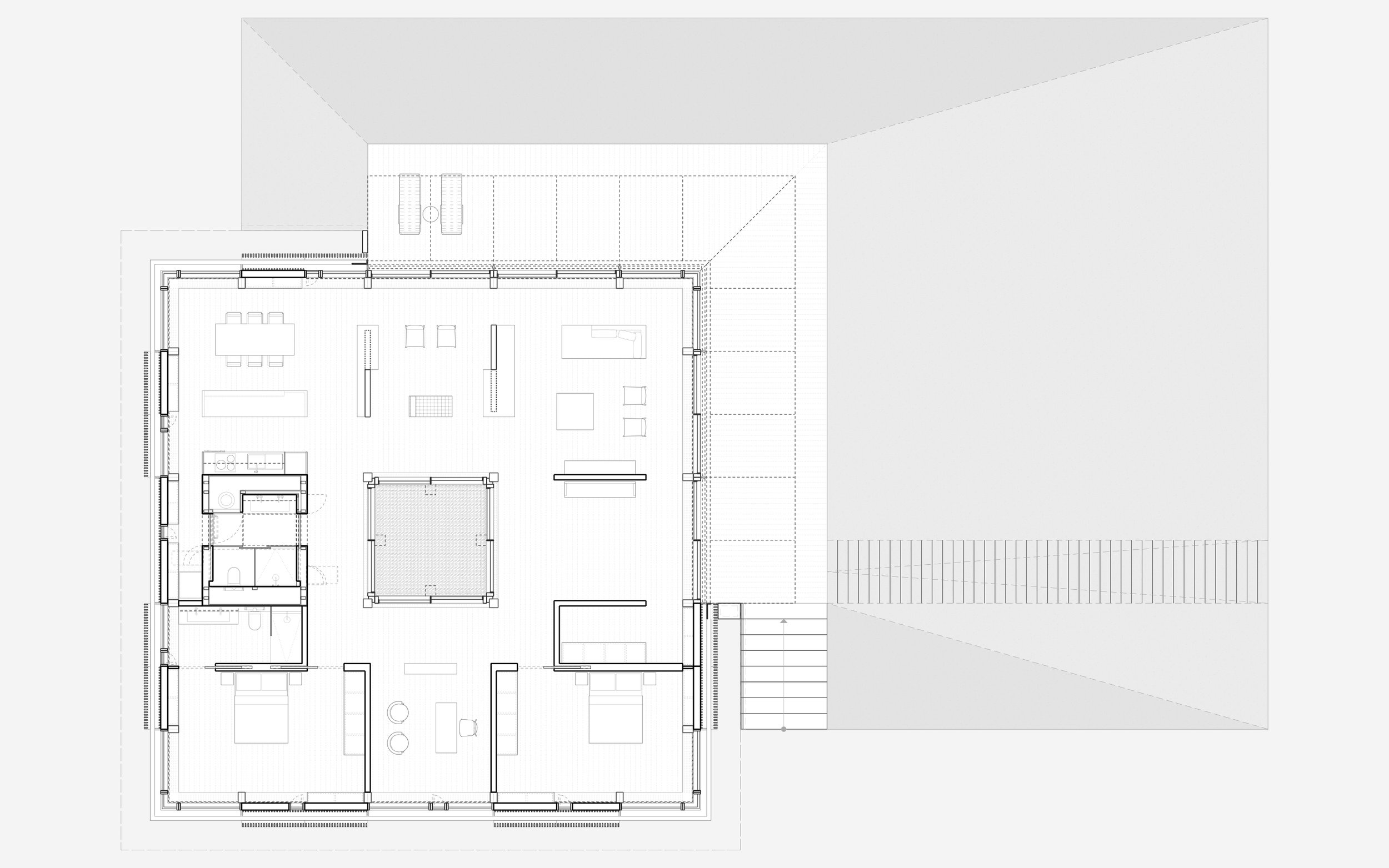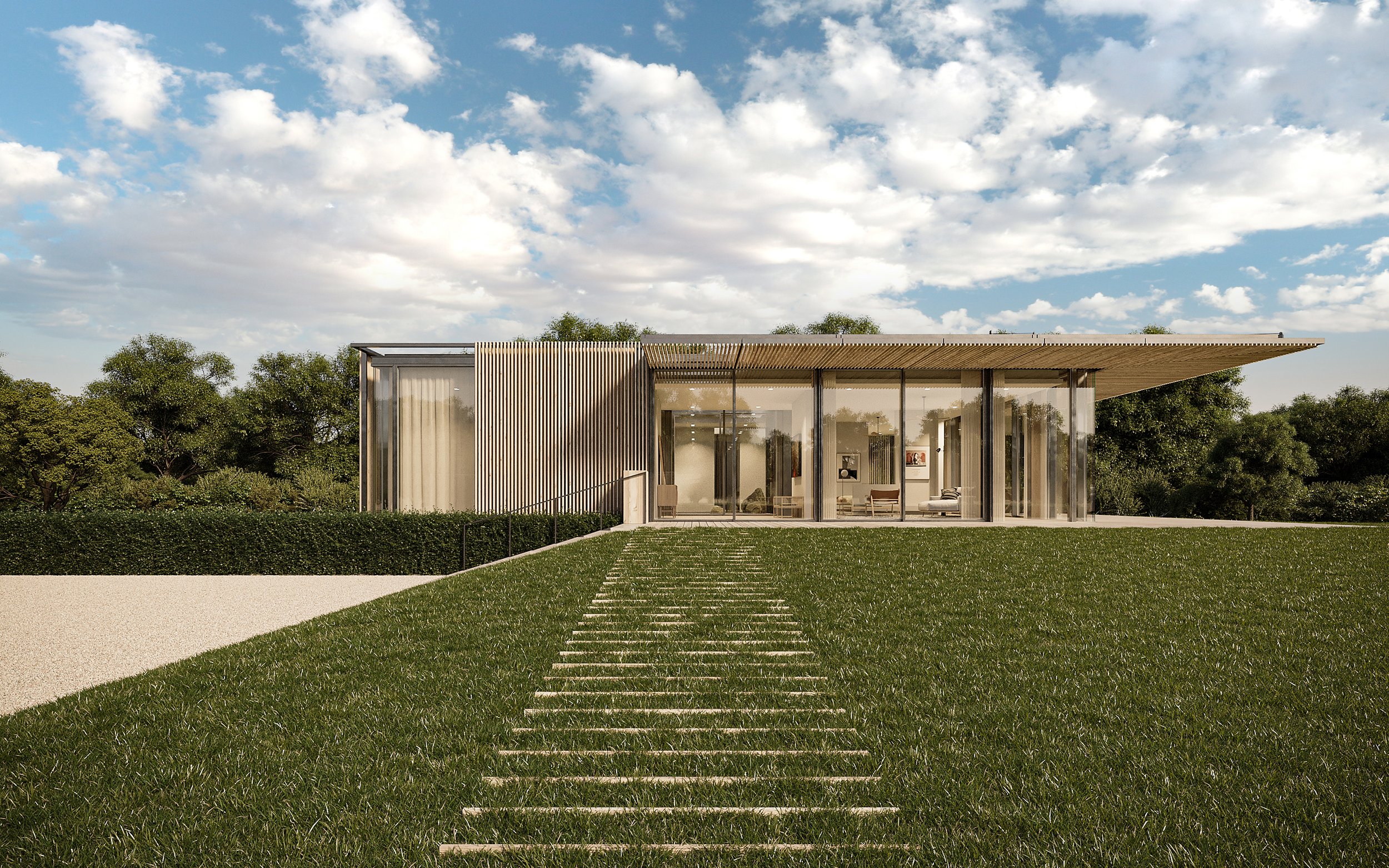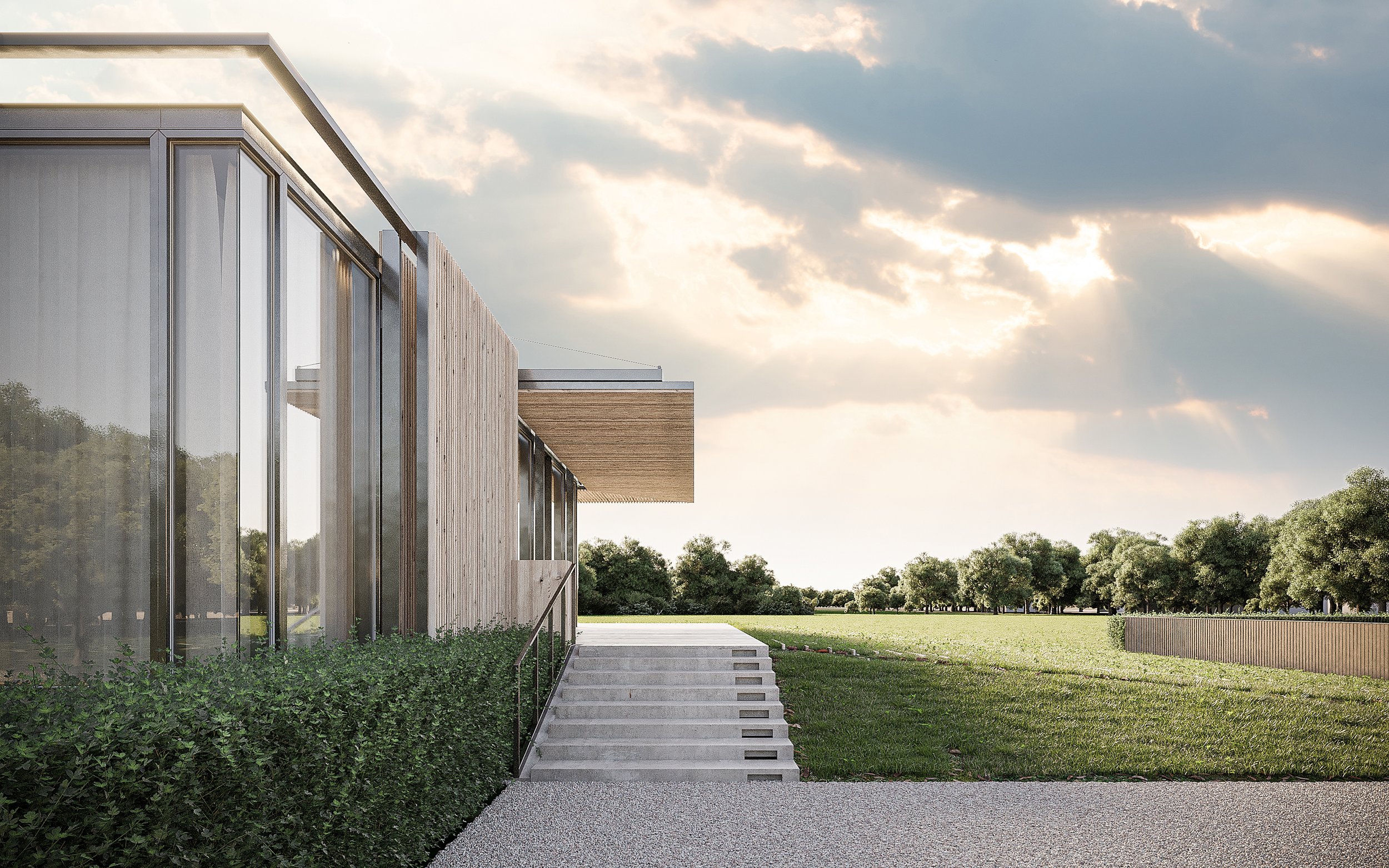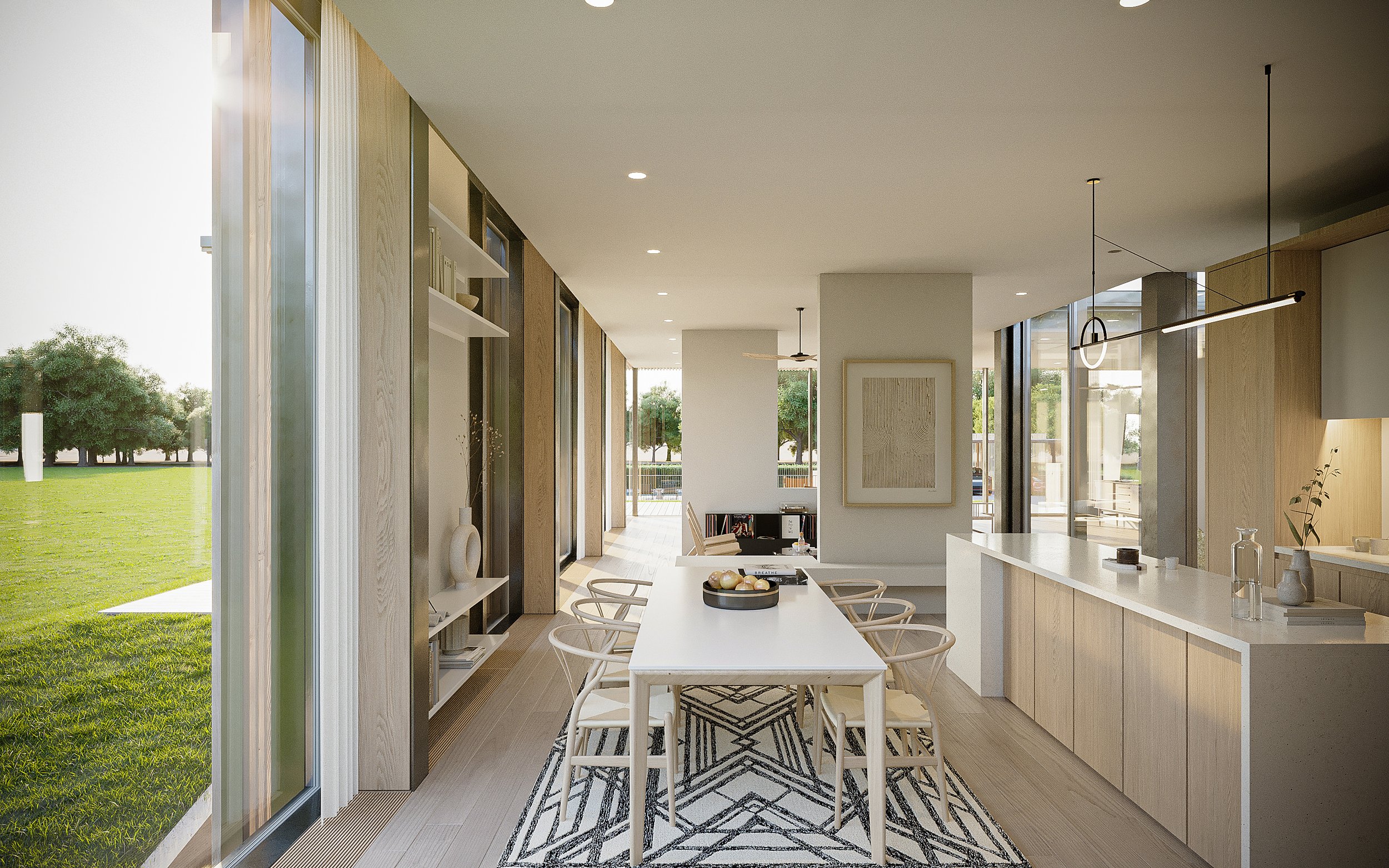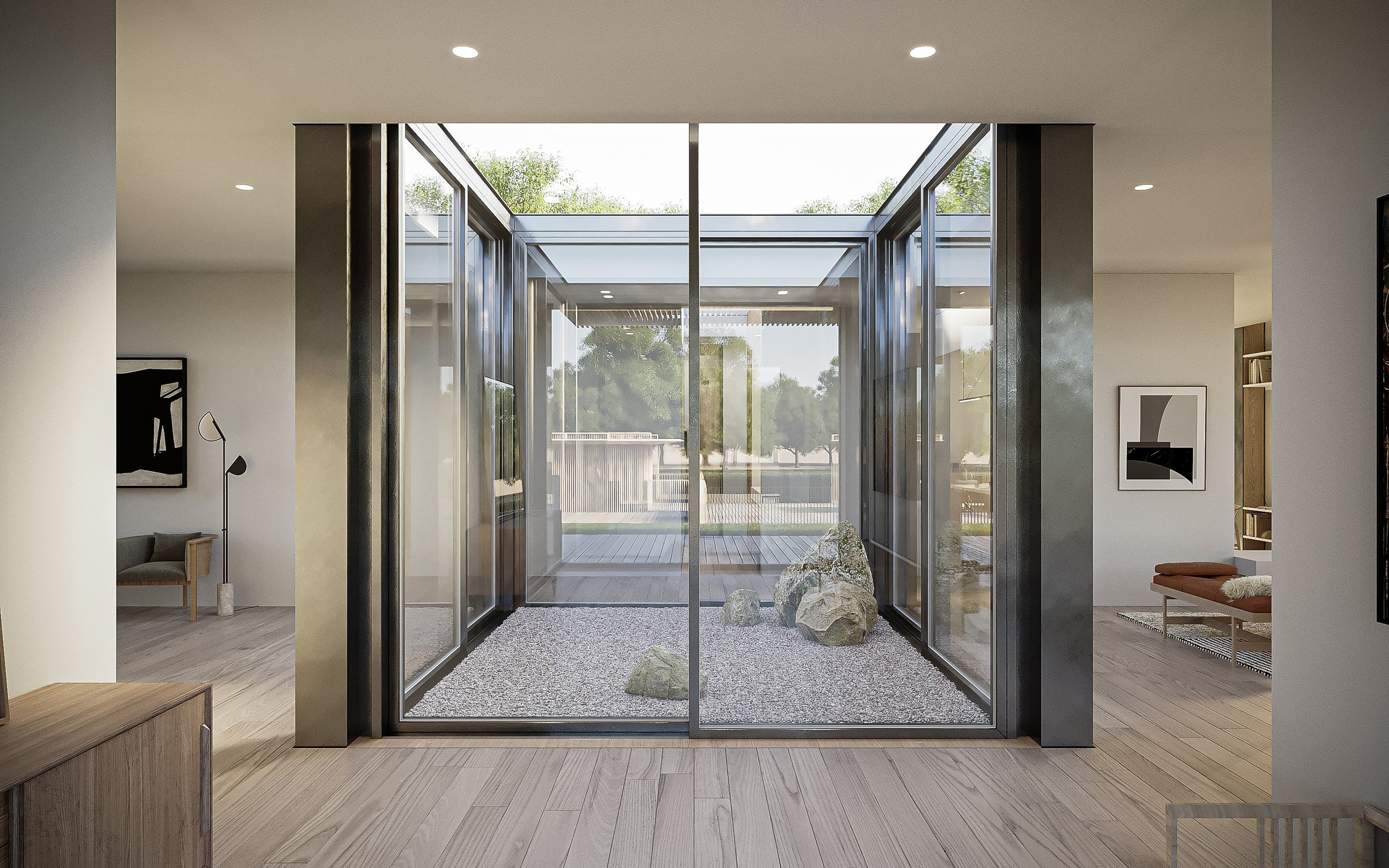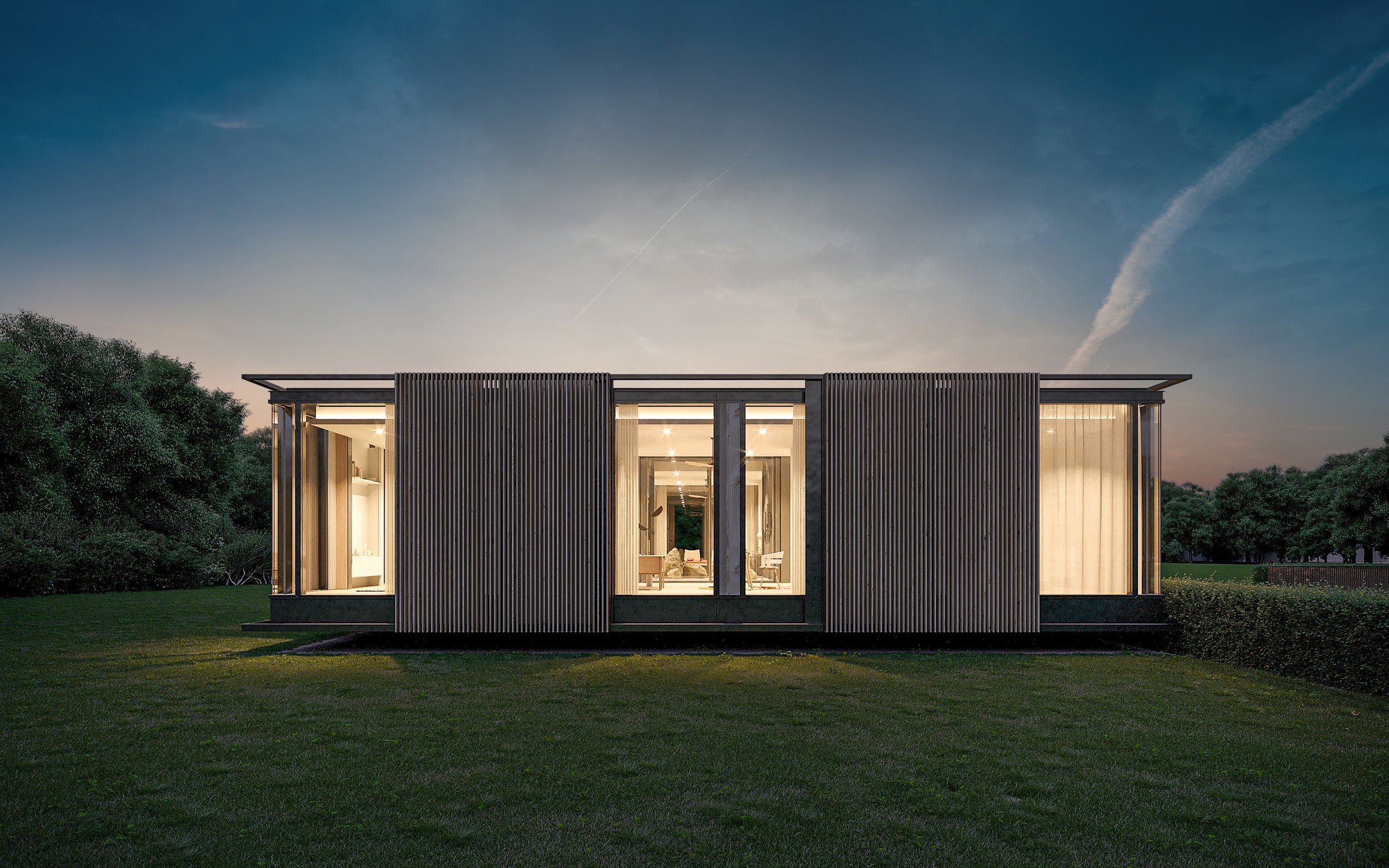BETTER House Phase II—Prototype
Location
Timeframe
Client
Program
Status
East Quogue, New York
2022-Present
Better Holdco, Inc
Single Family Residence
On-Going
The premise of the Prototype is to build upon the R&D Phase—outlining and redefining strategies of modular and prefabrication technologies—while fulfilling the need for well-designed, high-fidelity architectural spaces. Most modular and prefabrication projects have operated within the domain of multi-unit housing in dense urban settings: well-vetted and established dimensions and areas for spaces that are repeatable, stackable, and typically identical.
The allure of the detached, single family house lies in reduced restrictions for the size and configuration of domestic spaces and its design strategies offer a broader range of customization. Current thinking in the field mostly revolves around industrializing the urban unit of living, but much of this thinking and advancement can be leveraged for single-family homes to capitalize on modular and prefabrication technologies as well.
This knowledge informs an approach for this project that is conceptually grounded and pragmatic. With an understanding of the specific benefits and drawbacks of modularity and prefabrication, we break the house into its key components—the Core, the Frame, the Fill, and the Slab—and address them individually. The BETTER house takes shape not as a whole product or even a set of modules completed in a single factory, but rather is formed through atomized construction where the parts that constitute the house are built in separate locations based on their complexity. From a centralized, high-tech facility to regional and local manufacturers and suppliers, the parts come together on site ready for easy installation, reducing conventional risk and allowing for greater flexibility.
These parts can be configured to produce houses of different types with different organizational strategies (uni-lateral, bi-lateral, and quadri-lateral) calibrated to a variety of sites and specifications. Each house configuration relies on its own system for expansion or reconfiguration as needs change over time—leveraging the potential of modularity and prefabrication to achieve variation and adaptability with efficiency. The design language of each house typology is based on a series of underlying metrics—dimensions and relationships between individual parts—that ensure all elements work together, no matter the size or configuration of the finished house.
This Prototype Phase synthesizes the research and development toward a clear vision for how to build a BETTER House.

